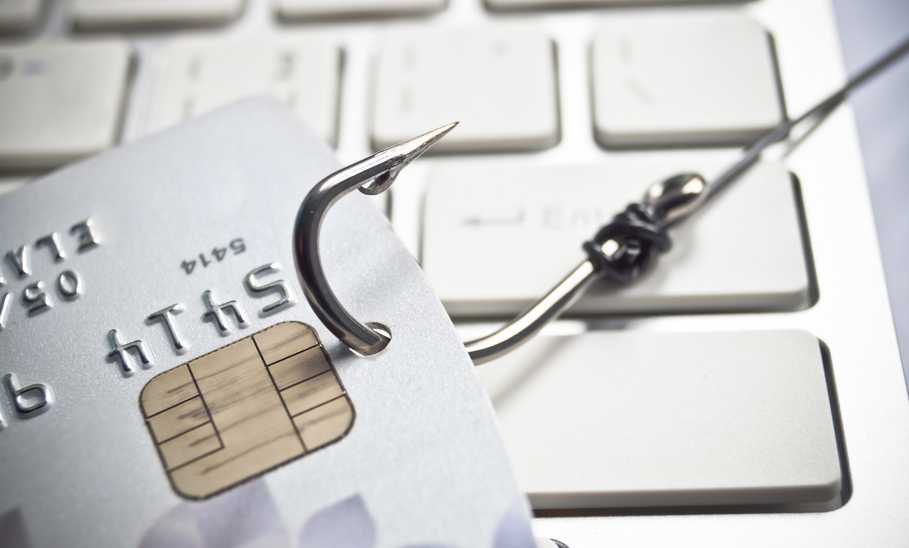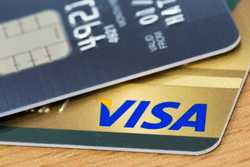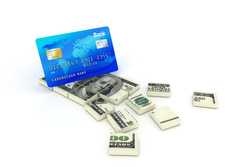The 15/3 Credit Card Hack That Could Help Your Score—But Not How You Think It Will

Our evaluations and opinions are not influenced by our advertising relationships, but we may earn a commission from our partners’ links. This content is created by TIME Stamped, under TIME’s direction and produced in accordance with TIME’s editorial guidelines and overseen by TIME’s editorial staff. Learn more about it.
While TikTok and other social media platforms can be an excellent resource for travel inspiration and fashion ideas, financial advice should be considered with caution. Many content creators speak with confidence when they offer up investing advice or ways to boost your credit score, but they often get it wrong. This is definitely the case when it comes to the famous "15/3 credit card hack," which is supposed to help you improve credit by making more than one payment toward your balance each month.
Some TikTok videos say this "hack" works because making multiple payments each month will lead to more on-time payments showing up on your credit reports. However, that part is not even remotely true. In fact, Equifax reports that credit card issuers only report to the credit bureaus once per month, usually on the billing cycle date. Ultimately, this means making multiple payments per month won't help you demonstrate a more positive payment history than making just one payment per month.
That said, there is one way the 15/3 credit card hack can help your credit score, and it's an important one. If you're interested in boosting your score this year and are willing to pay your bill more than once per month, read on to learn what the 15/3 credit card hack does accomplish and how it can help you in your journey.
The 15/3 credit card hack is not much of a "hack" at all. You may have been doing a variation of it already without even realizing it. Essentially, this hack asks you to make two credit card payments per billing cycle instead of just one—one payment 15 days before your credit card statement due date and another payment three days before. This means that, within a typical 30-day billing cycle, you would be making one payment toward your bill around halfway through and another just three days before your payment due date.
As we mentioned already, some social media influencers swear these two payments will both be reported to the credit bureaus, helping your score because your payment history is the most important factor that influences credit scores. Therefore, having two on-time (or in this case, early) payments reported each month should theoretically be better than one. The catch, as already discussed: That's not the case.
That said, making two payments per month actually can help your score—but for a different reason. This strategy makes your credit utilization ratio appear lower, which can boost your credit score in the long run.
While your payment history is the most important factor used to determine your credit score, the runner-up is your credit utilization ratio—or how much debt you owe in relation to your credit limits. This factor makes up 30% of FICO credit scores and 20% of scores that use the VantageScore 4.0 model. In addition, balances make up another 6% of VantageScore 4.0 scores, and this is another component of your credit utilization.
To understand how the 15/3 credit card hack can help boost credit, you have to remember that credit card billing cycles are usually around 30 days, but don't necessarily follow a calendar month. This means a billing cycle could be from Jan.14 to Feb.13, or over any other 30-day period within a calendar year.
Most credit cards offer a grace period. Those that do are legally required to offer a grace period of at least 21 days thanks to the Credit Card Accountability Responsibility and Disclosure Act of 2009 (CARD Act). The grace period is the amount of time you have to pay your credit card balance from the previous billing cycle without accruing interest. The date at the end of the billing cycle is your payment due date.
By making a credit card payment 15 days before your payment due date—and again three days before—you're able to reduce your balances and show a lower credit utilization ratio before your billing cycle ends. That information is reported to the credit bureaus.
As an example, let's say your credit card statement balance shows you owe $1,350 and your payment due date is Oct. 28. In that case, you would make a payment toward your balance 15 days before (on Oct. 13) and another one three days before (on Oct. 25). By making two payments instead of one, you get to inch your balance lower just before your statement period closes.
Also remember that the 15/3 credit card hack works best when you pay off your entire balance (or get as close as you can) before your statement closes and the amount owed is reported to the credit bureaus. By making the final payment three days before your statement closes, you get the chance to cover any additional purchases and charges you made throughout the month, and before your next statement closing date.
Either way, you should remember that credit bureaus and lenders like to see a credit utilization ratio below 30%. Meeting this threshold is the best way to help your credit. For example, if your credit limit is $5,000 this means carrying less than $1,500 in credit card debt. Since credit card interest rates are exorbitant right now—the average rate on accounts assessed interest was 22.16% in May 2023 according to the Federal Reserve— you should really avoid carrying a balance if possible.
Before you dive into this plan, remember that this so-called hack is mostly made up and the numbers "15" and "3" were pulled out of thin air. You could accomplish the same thing by paying the amount you would pay over two payments at once just before your payment due date, or by making two payments 11 and five days before your billing cycle ends. You could also make four payments toward your credit card bill each billing cycle to help your credit utilization ratio appear lower than it would be otherwise.
If you want to follow the 15/3 credit card hack as it stands, however, you can easily do so with a few simple steps.
Find out your credit card's payment due date. You can find this information by looking at your statement online, or by looking at the one you received in the mail.
Subtract 15 days from the due date and mark this date on your calendar. Look at your calendar and figure out the date that is 15 days before the payment due date.
Subtract three days from the due date and mark this date on your calendar. Figure out which date is three days before the payment due date.
Make a partial payment 15 days before your payment is due. Pay as much as you can toward your credit card balance.
Three days before your due date, pay the remaining balance on your credit card and enough to cover new purchases you have made since your billing statement last closed.
The 15/3 credit card hack can be used for a single credit card or multiple cards. With several different cards, you would just have to keep track of each due date and a running list of when each payment needs to be made.
To avoid late payments or confusion caused by multiple balances and cards, you may want to set up a simple spreadsheet to keep track of all the details. You can also set up each of your cards for auto-payments so the minimum payments are made automatically if you forget.
Whether or not the 15/3 credit card hack saves you money in the long run really depends. After all, you won't pay credit card interest if you pay your entire statement balance in full each month regardless of how many payments it actually takes to get there.
It's also important to remember that credit cards are an incredibly costly way to borrow money; cheaper options exist. In May 2023 (most recent date), when the average rate on credit accounts assessed interest was 22.16%, the average rate on 24-month personal loans was 11.48%, according to the Fed.
That said, there are some 0% APR credit cards to consider that let you skip interest on purchases, balance transfers, or both for a limited time. Cards in this niche offer an interest-free way to borrow money in the short-term. Using the 15/3 hack on these cards can help you show a lower credit utilization ratio along the way. Just remember that 0% APR offers don't last forever, and that the high rates credit cards usually charge apply when they end.
If you think the 15/3 credit card hack is nonsense, you're probably onto something. While you can keep your credit utilization lower each month by making multiple payments, there's nothing special about making a payment at 15 days and three days before your payment is due.
There are other proven ways to increase your credit score, including the following:
Whether you want to make multiple payments on your cards based on the 15/3 rule or not, paying your bill several times per month can boost your credit score. However, that's not because each payment you make gets reported to the credit bureaus—it's because making multiple payments helps you show a lower credit card balance before this information is reported to the credit bureaus.
So yes, consider paying your credit card bill more than once per month. Doing so can help you keep your credit utilization ratio on the low end and can also help you avoid long-term debt. In the meantime, take all financial advice offered on TikTok with a huge grain of salt.
Paying your credit card bill several times per month can help you credit score by lowering your credit utilization ratio.
All kinds of credit card traps exist, but the most common one involves using credit to fund purchases you can't really afford. In this instance, you wind up using debt to fuel your lifestyle, while the monthly amounts you owe increase over time. The "trap" part comes into play when you eventually owe so much that you struggle to keep up with monthly payments, and your finances start to unravel.
Credit utilization ratio is the amount you owe in relation to your credit limits, usually shown as a percentage. If you have credit limits of $10,000 and you currently owe $3,000, for example, your credit utilization ratio is 30%.
Lenders and credit bureaus prefer to see a ratio below 30%.
The information presented here is created by TIME Stamped and overseen by TIME editorial staff. To learn more, see our About Us page.



